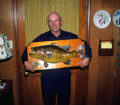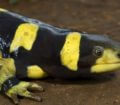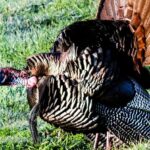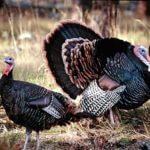Editor’s Note: For years, the secret was kept primarily in the Southeast. Those good ole boys living along the Appalachian chain of mountains, who were accustomed to catching live bait and using that bait to take bass, rarely shared their secret. Most folks knew that crayfish, night crawlers and minnows would catch bass, and that occasionally a bigmouth could be caught on a frog or a mouse. But the men from the hills discovered that the best bait for bucketmouths were amphibians known as spring lizards and waterdogs – two different kinds of salamanders. The spring lizard and the larvae of the tiger salamander, which are called waterdogs, are best for bass. Cold-blooded, salamanders become more active when temperatures are cooler – just the opposite of most live bait. In an aquarium test, bass ignored minnows, frogs and worms to grab the long-lasting and active waterdogs and spring lizards.
 Tiger salamanders burrow in the damp soil in the winter and then migrate to shallow ponds in the spring to breed and lay eggs. The developing tiger salamander larvae (waterdogs) are usually 4-8 inches long with external gills and four, partially-developed legs. Once the waterdogs change into land-dwelling adults they are not as effective on bass.
Tiger salamanders burrow in the damp soil in the winter and then migrate to shallow ponds in the spring to breed and lay eggs. The developing tiger salamander larvae (waterdogs) are usually 4-8 inches long with external gills and four, partially-developed legs. Once the waterdogs change into land-dwelling adults they are not as effective on bass.
And spring lizards, which live under moss or rotting logs along the edges of cool-water streams and springs in the eastern U.S. and parts of Canada, also call bass. Hank Parker, who won the Bassmaster Classic in 1979 and in 1989, and still fishes on TV, remembers, “In one of the first tournaments that I ever fished on Lake Wylie, on the borders of North Carolina and South Carolina, there were some men from the hills in their johnboats angling with their spring lizards. The rest of the tournament anglers whispered and snickered about those country boys who had come to fish with their buckets full of bait. However, when the tournament was over, and the money was divided, those good ole boys had all our money, and we had learned just how deadly the spring lizard was on catching bass.”
One problem in fishing the spring lizard is that a hook may wear a hole in its soft nose. So, anglers sometimes use various types of harnesses as bait savers and bait-saver hooks. Another difficulty in bassing with spring lizards is the fish’s tendency to strike the tail end of the bait. So, some folks hook a spring lizard just ahead of its back leg, utilize a #2 or a #4 hook with a split, and retrieve the bait. Other anglers fish the spring lizard on the bottom or suspend the bait with a bobber.
 Probably one reason only a few anglers fish the spring lizards is the lizards’ shyness in being caught. Before many bait shops handled the spring lizards, some anglers shone headlights over rocks in small streams at night – catching the lizards by threading a worm on the crooked end of a coat hanger and then lifting it up when the salamander bit. However anglers felt the spring lizards were well worth the trouble because of the bass’ love affair with them.
Probably one reason only a few anglers fish the spring lizards is the lizards’ shyness in being caught. Before many bait shops handled the spring lizards, some anglers shone headlights over rocks in small streams at night – catching the lizards by threading a worm on the crooked end of a coat hanger and then lifting it up when the salamander bit. However anglers felt the spring lizards were well worth the trouble because of the bass’ love affair with them.
To learn more about bass fishing, check out John E. Phillips’ eBooks, print books and Audible books at https://johninthewild.com/books#bass.










